Sony A1 vs Canon EOS R5: Which is the best hi-res 8K camera?
Everyone is asking: Sony A1 vs Canon EOS R5 – which is better? The answer may surprise you…
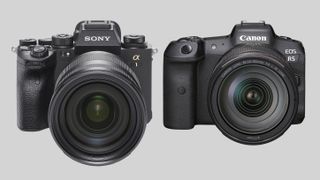
There's one question on everyone's lips right now: Sony A1 vs Canon EOS R5 – which is the better camera? The A1 set the photography world ablaze with its scintillating specs, and at first glance it seems to outclass the mighty R5.
However, is the difference between the two supercameras really that pronounced – and, when all is said and done, is the Sony A1 worth the extra $2,599 over the Canon EOS R5 when it comes to price?
• Read more: Canon EOS R5 review
There's a lot to dive into, from each camera's 8K video capabilities (and, of course, overheating issues) to their respective choice of memory card formats. In this article we'll look at both bodies head-to-head to help you decide which one is right for you.
• See also: Canon EOS R vs Sony A7 III
Is the best Sony camera better than the best Canon camera? Let's put these two 8K beasts against each other and find out…
Sony A1 vs Canon EOS R5: sensor resolution
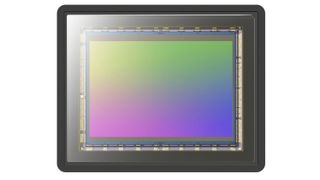
The Sony A1 holds an advantage in the resolution category, packing a 50.1MP full-frame, backside illuminated, stacked image sensor with integral memory. By contrast, the Canon EOS R5 features a standard 45MP full-frame sensor.
On the surface, the advantage isn't as huge as it may seem. When comparing, for example, the 45MP images from the R5 to the 50MP images of the Canon EOS 5DS, the difference isn't that pronounced in practical terms.
What makes a huge difference, though, is the Sony A1's Pixel Shift Multi Shooting mode. This technology – seen in cameras like the Sony A7R IV – uses the in-body image stabilization system to move the image sensor between multiple exposures, producing an image with quadruple the resolution of the native sensor readout.
Thus, the A1 is capable of 199MP images from a 16-shot composite – though it should be stressed that this process requires a completely still subject, and processing with the Imaging Edge desktop software, so its uses are pretty much limited to still life subjects.
Sony A1 vs Canon EOS R5: burst shooting
The A1 possesses a clear advantage over the R5 – and, indeed, the best cameras for sports photography – with its blisteringly fast 30fps continuous shooting speed. The R5 counters with a still lightning-quick 20fps top speed, but it's nowhere close.
An interesting point is that the Sony can only achieve 30fps when shooting Compressed RAW, not Lossless Compressed or Uncompressed (though it can shoot at 20fps with other RAW types).
In terms of buffer depth, Sony tells us that the A1 can handle 155 compressed RAWs at 30fps and 238 compressed RAWs at 20fps – the latter contrasting with the 180 uncompressed RAWs that the R5 can buffer at 20fps.
Sony A1 vs Canon EOS R5: autofocus
The Canon EOS R5 holds a significant edge over the Sony A1 when it comes to autofocus in both stills and video.
The R5 features 5,940 AF points for stills (with 4,500 for video) with 100% coverage, and is capable of focusing down to -6EV and boasts the world’s fastest AF speed of just 0.05 sec. The A1 has a comparatively paltry 759 AF points with 92% coverage, and can only focus down to -4EV.
Canon's Dual Pixel AF II combined with its AI-programmed Deep Learning AF makes the R5 capable of transformatively accurate eye, face and body tracking for humans and animals.
While the A1 also features real-time Eye AF for humans, animals and birds, the latter only works for still images – whereas Canon's impossibly accurate animal eye AF works on birds in video as well as stills.
Sony A1 vs Canon EOS R5: ISO sensitivity
The R5 holds another advantage over the A1 when it comes to sensitivity – which isn't unexpected, given the fewer (and, hence, larger) number of individual photosites on the sensor.
The Canon EOS R5 features a native ISO range of 100-51200, which is expandable to 50-102,400. In video the Auto ISO mode operates between 100-6400, manual is 100-25,600, and the maximum sensitivity for filming is ISO51,200.
While we don't know the video sensitivity ranges, the A1 has a native ISO of 100-32000 for stills, expandable to 50-102,400. Factor in the R5's -6EV autofocus capability compared to the A1's -4EV, and the Canon is the superior performer for low light shooting.
Sony A1 vs Canon EOS R5: video
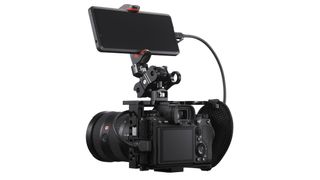
Both the A1 and R5 are capable of 8K 30p video, but it's the latter that has the slight edge. The Canon can record full sensor width (uncropped) 8K RAW video, internally, in 4:2:2 12-bit Canon Log (minimum ISO400) or HDR PQ (both H.265), and can capture both UHD and DCI. The Sony, meanwhile only records in 10-bit 4:2:0 in Sony Log (minimum ISO800).
Likewise both cameras can record 4K (UltraHD) up to 120p. The EOS R5 records internally in the same 4:2:2Canon Log or HDR PQ, with external HDMI recording up at up to 60p – with the A1 seeing the same 60p limit on RAW HDMI output.
While the R5 offers a 4K HQ mode that creates oversampled 8K footage, the A1 only offers 5.8K oversampling for 4K when shooting in Super35 format (giving it a notable edge over the Sony A7S III, which doesn't support 4K Super35).
While Canon's Dual Pixel CMOS AF, with eye and animal eye AF, is available in all video modes on the R5, as noted the Sony A1 cannot perform animal eye AF in movie mode.
Crucially, Sony claims that the A1 can shoot 8K or 4K 60p footage for a maximum of 30 minutes – but until we are able to test the camera ourselves, we're taking this number with a huge pinch of salt. The EOS R5 can, on paper, shoot 8K or 4K 60p for 20 minutes, though recent firmware updates have extended that time in practical terms (albeit with a number of caveats).
Another feature that is, at present, exclusive to the R5 is the Frame Grab facility. This enables you to take a pristine 35.4MP still image from 8K footage in either JPG or HEIF format – something that is surprisingly useful in practice.
Sony A1 vs Canon EOS R5: memory format
While both cameras support SD and CFexpress cards, meaning that you can start using the new cameras with your existing SDs without having to invest in a pricey new format, they do so in very different ways.
The Sony A1 features dual UHS-II SD / CFexpress Type A card slots. These hybrid slots (first seen in the Sony A7S III) can accept SD cards as well as the newer, smaller CFexpress cards.
By contrast, the Canon EOS R5 features one slot for a UHS-II SD card and one slot for a CFexpress Type B – the original, larger CFexpress cards that are also supported by cameras like the Canon EOS-1D X Mark III, Nikon Z7 II and Panasonic S1R.
There are two ways to look at things. On the one hand, the R5 using CFexpress Type B means that you can use the same memory cards if you buy another high end camera body – whereas the Type A cards are currently only used by one other camera, the A7S III. So that's worth considering, if you're likely to buy, rent or use another camera.
On the other hand, though Sony hasn't yet confirmed it, the fact that the A1 can record to two CFexpress cards means that it could be capable of recording a duplicate / backup on the second card – something that the R5 cannot due, due to the speed disparity between its lone CFexpress and SD card slots.
Sony A1 vs Canon EOS R5: viewfinder, LCD & body
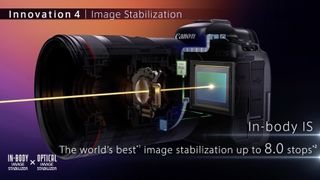
In terms of physical size and heft, the Sony is ever so slightly less broad and deep than the Canon, but they both tip the scales at virtually the same weight. The A1 measures 129 x 97 x 81mm and weighs 737g, while the comes in at R5 138 x 98 x 88mm and 738g.
The A1 takes more than a few cues from the Sony A7S III, particular in terms of the electronic viewfinder. The A1 features the same 9.44 million dot EVF, with 0.9x magnification and a refresh rate of up to 240fps with an adjustable eyepoint. The R5's 0.5-inch OLED EVF has a still impressive, but comparatively paltry 5.69 million dots, 0.76x magnification, 120fps refresh rate and a 23mm eyepoint.
The Canon's rear LCD display is a 3.15-inch affair with 2.1 million dots, but the details of Sony's screen.
Both cameras have a shutter life of 500,000 actuations, though the battery life is better (on paper) on the A1, which can take 530 shots with the LCD screen and 430 shots with the EVF, compared to the R5's 490 shots with LCD and 320 shots through the EVF. Each camera is weather sealed, though historically Canon's sealing is virtually flawless while Sony has a less than stellar track record.
An area where the A1 has a very definite advantage, though, is in flash sync speed. Its new dual driven shutter (featuring a spring and electromagnetic motor) achieves a 1/400 sec flash sync speed with its mechanical shutter – which will be invaluable for professional studio work.
The Sony can also achieve 1/200 sec with the electronic shutter (the first time this is available on an Alpha camera) and 1/250 sec in APS-C mode. By comparison, the R5 can achieve 1/200 sec mechanically and 1/250 sec via electronic first curtain.
When it comes to in-body image stabilization (IBIS), however, the clear advantage goes to Canon. The EOS R5 boasts up to 8 stops of stabilization, thanks to a combination of IBIS and lens IS, while the A1 maxes out at a claimed 5.5 stops – though Sony's stabilization is a a few notches below Canon's (and Nikon's and Panasonic's) in our experience.
Sony A1 vs Canon EOS R5: connectivity
In terms of everyday connections, the Canon EOS R5 features a USB-C (USB 3.1 Gen 2), micro HDMI (type D), microphone / line in and headphone ports, with an N3 remote terminal and flash sync socket. The Sony A1 additionally features an ethernet port and multi-connector, and a full-size HDMI socket instead of a micro.
In terms of wireless connectivity, both cameras feature 2.4GHz Wi-Fi and Bluetooth 4.2. However, the R5 also features integrated 5GHz Wi-Fi support – which actually puts it a peg above the flagship Canon EOS-1D X Mark III.
While both cameras feature the standard Wi-Fi and Bluetooth options, when it comes to professional-grade connectivity, Sony has the edge thanks to support for FTP transfer, 1000BASE-T LAN, and SuperSpeed 10Gbps USB 3.2, along with built-in WiFi 11ac 2x2 MIMO (multiple-input multiple-output) antennas for faster and further data transfer.
The R5 is capable of 2x2 MIMO transfer, along with SFTP networking and an ethernet connection, but only by purchasing the separate Canon WFT-R10 battery grip and Wi-Fi transmitter.
Sony A1 vs Canon EOS R5: verdict
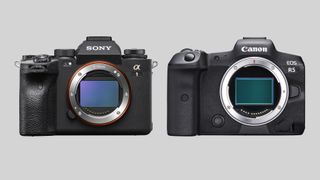
So, where does this all leave us – which is the better camera of these two game-changers? As is often the case, the answer is "it depends".
If your primary concerns are resolution (45MP vs 50MP is neither here nor there, but the option for 199MP still life shots will be a boon for some), the fastest possible burst shooting, the best EVF, superior battery life, faster flash sync speed and integrated professional connectivity, the Sony A1 is the camera for you.
However, the Canon EOS R5's resolution is basically the same in practical terms (aside from the 199MP mode, which has the caveat of requiring absolute stillness) and its 20fps burst shooting is still far faster than you'll ever need. As such it arguably has more advantages in more important areas, with autofocus, ISO sensitivity and video capabilities that are all a cut above.
The $2,599 difference is significant. In crude terms, the Sony represents a 67% price increase for a 50% increase in continuous shooting speed and an 11% increase in resolution. To put that into context, if that extra 5MP resolution and 10fps speed isn't important to you, you could buy an EOS R5 with a Canon RF 50mm f/1.2L and still have $300 left over!
How we test cameras
Why you can trust Digital Camera World
We test mirrorless and DSLR cameras both in real-world shooting scenarios and in carefully controlled lab conditions. Our lab tests measure resolution, dynamic range and signal to noise ratio. Resolution is measured using ISO resolution charts, dynamic range is measured using DxO Analyzer test equipment and DxO Analyzer is also used for noise analysis across the camera's ISO range. We use these real-world testing and lab results to inform our comments in buying guides. For compact cameras and phones, we judge on real world handling and photographic results alone.
Read more:
Canon EOS R5 review
Best Canon camera
Best Sony camera
Best 8K monitor
Get the Digital Camera World Newsletter
The best camera deals, reviews, product advice, and unmissable photography news, direct to your inbox!

James has 22 years experience as a journalist, serving as editor of Digital Camera World for 6 of them. He started working in the photography industry in 2014, product testing and shooting ad campaigns for Olympus, as well as clients like Aston Martin Racing, Elinchrom and L'Oréal. An Olympus / OM System, Canon and Hasselblad shooter, he has a wealth of knowledge on cameras of all makes – and he loves instant cameras, too.